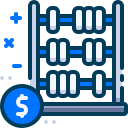Start Smart: Investment Fundamentals for Beginners
Today’s chosen theme: Investment Fundamentals for Beginners. Welcome! If you’re just starting out, this is your friendly roadmap to clarity, confidence, and consistent progress. Stick around, subscribe for future beginner-focused guides, and share your first investing goal so we can cheer you on.

Define Your Why: Goals, Time Horizon, and Risk Comfort
Set clear, human goals
Name the future you’re funding: a home down payment, retirement freedom, your child’s education, or a sabbatical year. Specific, human goals keep you motivated when markets wobble. Share your main goal and timeline below, and we’ll suggest practical steps that match your starting point.
Match your timeline to your mix
Short-term goals usually need safer mixes; long-term goals can handle more stock exposure for growth. A three-year purchase date is different from a thirty-year retirement horizon. Tell us your timeframe, and we’ll help translate it into a sensible asset mix you can actually stick with.
A quick story about risk tolerance
Maya opened her first account in a calm market, then panicked during a drop. After journaling her feelings and revisiting goals, she chose a slightly safer allocation she could hold. Her lesson for beginners: the best portfolio works for you emotionally, not just mathematically.
Compounding: The Quiet Superpower
At a reasonable long-term return, money can roughly double about every decade using the Rule of 72. That means early contributions enjoy more doubling periods. Start today, even if it’s small, because consistency plus time quietly does heavy lifting while you focus on living your life.
Know Your Building Blocks: Stocks, Bonds, and Cash
Stocks: ownership and growth
Buying stocks means owning pieces of businesses. Over long stretches, profits and innovation drive growth, but prices can swing widely. Beginners benefit from broad index funds to avoid single-company risk. If stock moves scare you, that’s normal; reduce exposure to sleep better while still capturing long-term potential.
Bonds: steadier ballast
Bonds are loans to governments or companies that pay interest and usually fluctuate less than stocks. They can soften portfolio swings and provide income. Duration and credit quality matter, but beginners can start with broad bond index funds. Share your risk comfort, and we’ll suggest a balanced starting mix.
Cash: safety and readiness
Cash and high-yield savings protect short-term needs and your emergency fund, giving you confidence to invest the rest. Think of cash as your safety cushion and opportunity fund. Start by building three to six months of expenses, then automate investing. Tell us your target emergency cushion for accountability.
Index funds and ETFs keep it simple
One broad stock index fund plus one broad bond index fund can instantly diversify across thousands of securities at low cost. Simplicity supports discipline. Many beginners choose a total world stock and a total bond fund to start. Post your country, and we’ll suggest widely available low-cost options.
A sample beginner mix
Long horizon and strong stomach? Maybe an 80% stock and 20% bond mix. Need more calm? Consider 60% stocks and 40% bonds. There’s no perfect number—only the one you’ll keep. Share your tentative mix, and we’ll provide gentle feedback tailored to your comfort and goals.
Rebalance on a calm schedule
Over time, winners grow and shift your mix. Rebalancing once or twice a year—or at set thresholds—nudges you back to plan, often selling a bit of what soared and buying what lagged. Choose a schedule now, write it down, and tell us your plan to stay consistent.


Fees, Taxes, and Accounts: The Hidden Levers
A one percent annual fee seems tiny, but over decades it can mean tens of thousands less for you. Favor low expense ratios, avoid unnecessary trading, and scrutinize advisory fees. Every saved dollar remains invested on your behalf. Comment your current fund fees, and we’ll suggest cheaper alternatives.
Fees, Taxes, and Accounts: The Hidden Levers
Tax-advantaged accounts—like 401(k) and IRA in the United States, ISA in the United Kingdom, or TFSA in Canada—can accelerate compounding. Contribution limits and rules vary by country. Beginners should learn their local options and start with the most tax-efficient first. Ask about your region’s typical account choices.



